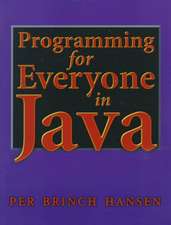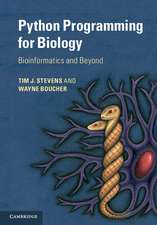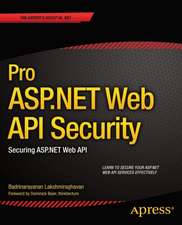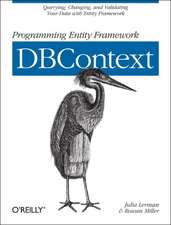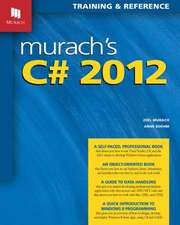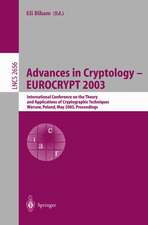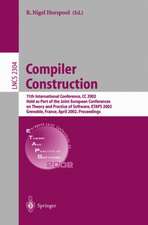LISP, Lore, and Logic: An Algebraic View of LISP Programming, Foundations, and Applications
Autor W. Richard Starken Limba Engleză Paperback – 20 feb 1990
Preț: 588.71 lei
Preț vechi: 735.89 lei
-20% Nou
Puncte Express: 883
Preț estimativ în valută:
112.66€ • 122.34$ • 94.64£
112.66€ • 122.34$ • 94.64£
Carte tipărită la comandă
Livrare economică 22 aprilie-06 mai
Preluare comenzi: 021 569.72.76
Specificații
ISBN-13: 9780387970721
ISBN-10: 038797072X
Pagini: 278
Ilustrații: XVIII, 278 p. 14 illus.
Dimensiuni: 155 x 235 x 14 mm
Greutate: 0.42 kg
Ediția:Softcover reprint of the original 1st ed. 1990
Editura: Springer
Colecția Springer
Locul publicării:New York, NY, United States
ISBN-10: 038797072X
Pagini: 278
Ilustrații: XVIII, 278 p. 14 illus.
Dimensiuni: 155 x 235 x 14 mm
Greutate: 0.42 kg
Ediția:Softcover reprint of the original 1st ed. 1990
Editura: Springer
Colecția Springer
Locul publicării:New York, NY, United States
Public țintă
GraduateCuprins
1 A First Look at LISP.- 1.1 The origins of LISP.- 1.2 A glimpse into the structure of LISP.- 1.3 Additional reading.- 2 Elementary Programming.- 2.1 Programming straightforward computations.- 2.2 Recursive and iterative computations.- 2.3 External files.- 2.4 Searching.- 2.5 Extra variables and functions, for efficiency.- 2.6 Other list functions.- 2.7 The fixed-point style of computation.- 3 Deeper into Essential Structure.- 3.1 LISP’S data.- 3.2 Another look at familiar functions.- 3.3 LISP syntax in detail.- 3.4 Self-processing.- 3.5 Bindings, scopes, and environments.- 3.6 Additional reading.- 4 Computational Philosophy.- 4.1 Models of computation.- 4.2 Pure LISP.- 4.3 Types of recursion.- 4.4 The limits of LISP: an unsolvable problem.- 4.5 The folklore of fixed-point computation.- 4.6 Additional Reading.- 5 LISP Functions for Powerful Programming.- 5.1 Debugging tools.- 5.2 Applicative operators.- 5.3 Macros.- 5.4 Structures, vectors, and arrays.- 5.5 Function closures.- 5.6 COERCion.- 5.7 Surgical operations.- 6 Interpreters: from Algebra to LISP.- 6.1 Algebras and interpreting: an abstract view.- 6.2 LISP interpreters.- 6.3 Compiled LISP.- 7 Mathematical Foundations of LISP.- 7.1 The lambda calculus defined.- 7.2 Straightforward computation in the lambda calculus.- 7.3 Fixed-points for object functions.- 7.4 Recursive functions in the lambda calculus.- 7.5 Pure LISP in the lambda calculus.- 7.6 Additional reading.- 8 Automatic Reasoning, Algebraic Intelligence.- 8.1 Logics.- 8.2 Predicate logic and unification.- 8.3 Prolog.- 8.4 Speculation on algebraic intelligence.- 8.5 Additional reading.- 9 Bibliography.- 10 Answers to Selected Exercises.- 11 Index.


